Home / Media & Press /
Porticoes of Bologna in the UNESCO World Heritage List - Press release
Updated on 30 July 2021
On 28 July
2021, the Porticoes of Bologna officially became part
of the UNESCO World Heritage List. The inscription constitutes
a new recognition by UNESCO for the city of Bologna, which had already been
declared Creative City of Music in 2006.
The decision, announced in Fuzhou, China, is an
extraordinary achievement for the city of Bologna, the result of a long
nomination process involving the Municipality, the institutions and associations
of Bologna, the Emilia-Romagna Region and the Ministry of Culture. It is also a great achievement for our
country, since it brings the total number of Italian sites designated as World
Heritage by UNESCO to 58, plus 14 registered in the intangible heritage, for a
total of 72.
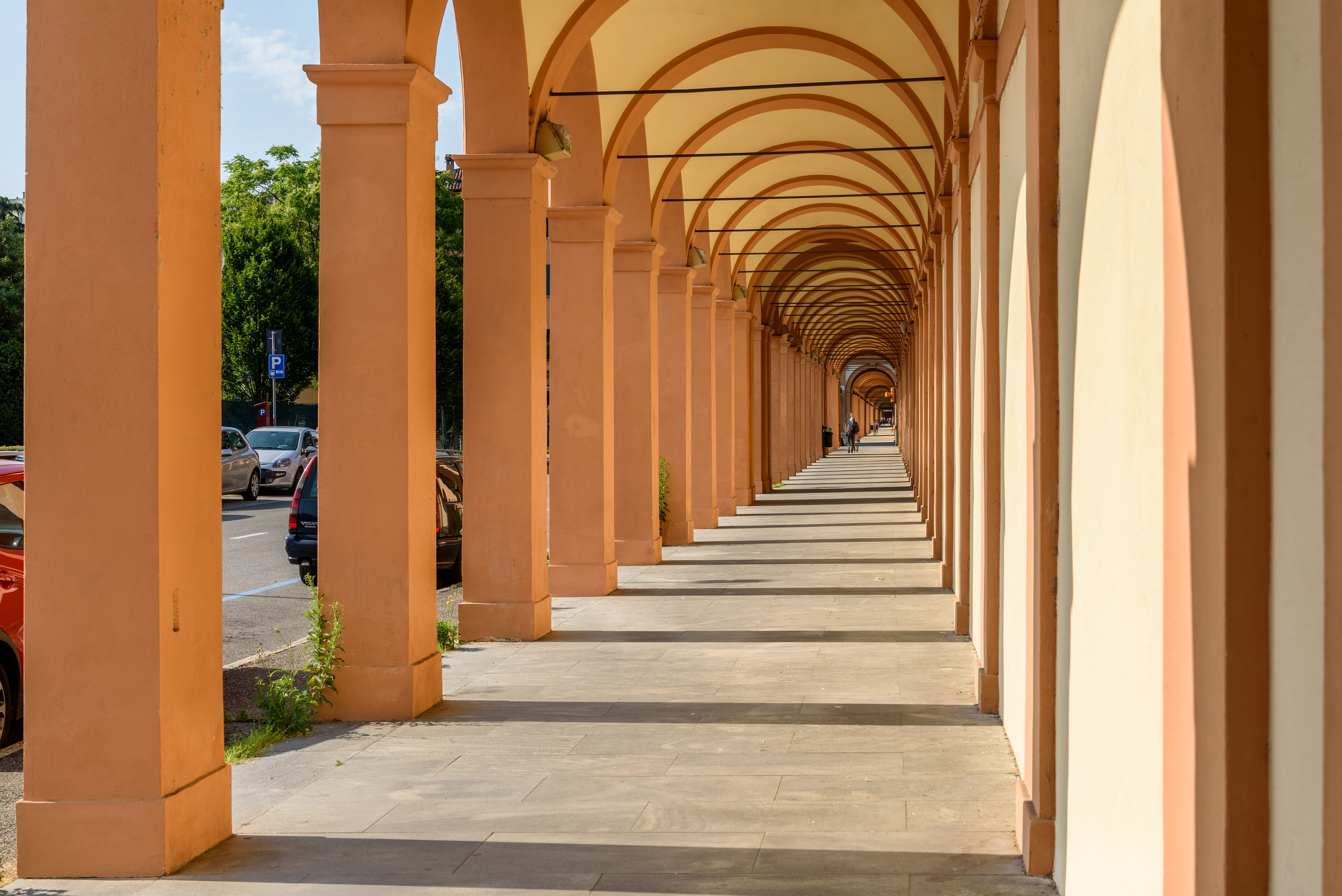
Bologna has a total of 62 km of porticoes. However, not
all porticos were nominated, as the choice was limited to a series of 12
components that together depict a cross-section of the architectural,
historical and micro-geographical variety of the town- representing parts of
the historic centre and other more peripheral areas. Taken as a whole, they
constitute "an identifying element of the city of Bologna, both by the
community and by visitors, a reference point for a sustainable urban lifestyle,
in which religious and civic spaces together with the homes of all social
classes are perfectly integrated", reads the motivation for the nomination launched in January 2020. The Unesco list therefore includes Piazza Santo
Stefano, the porticos of Via Zamboni, those of Strada Maggiore, the MAMbo
portico building, the porticos of Piazza Cavour and Via Farini, immediately
followed by the archway of San Luca, the Pavaglione porticoes and Piazza
Maggiore, the porticoed street of Santa Caterina, the porticoed building in the
Barca district, the Certosa portico, the Baraccano porticoes and the Galliera
porticoed street.
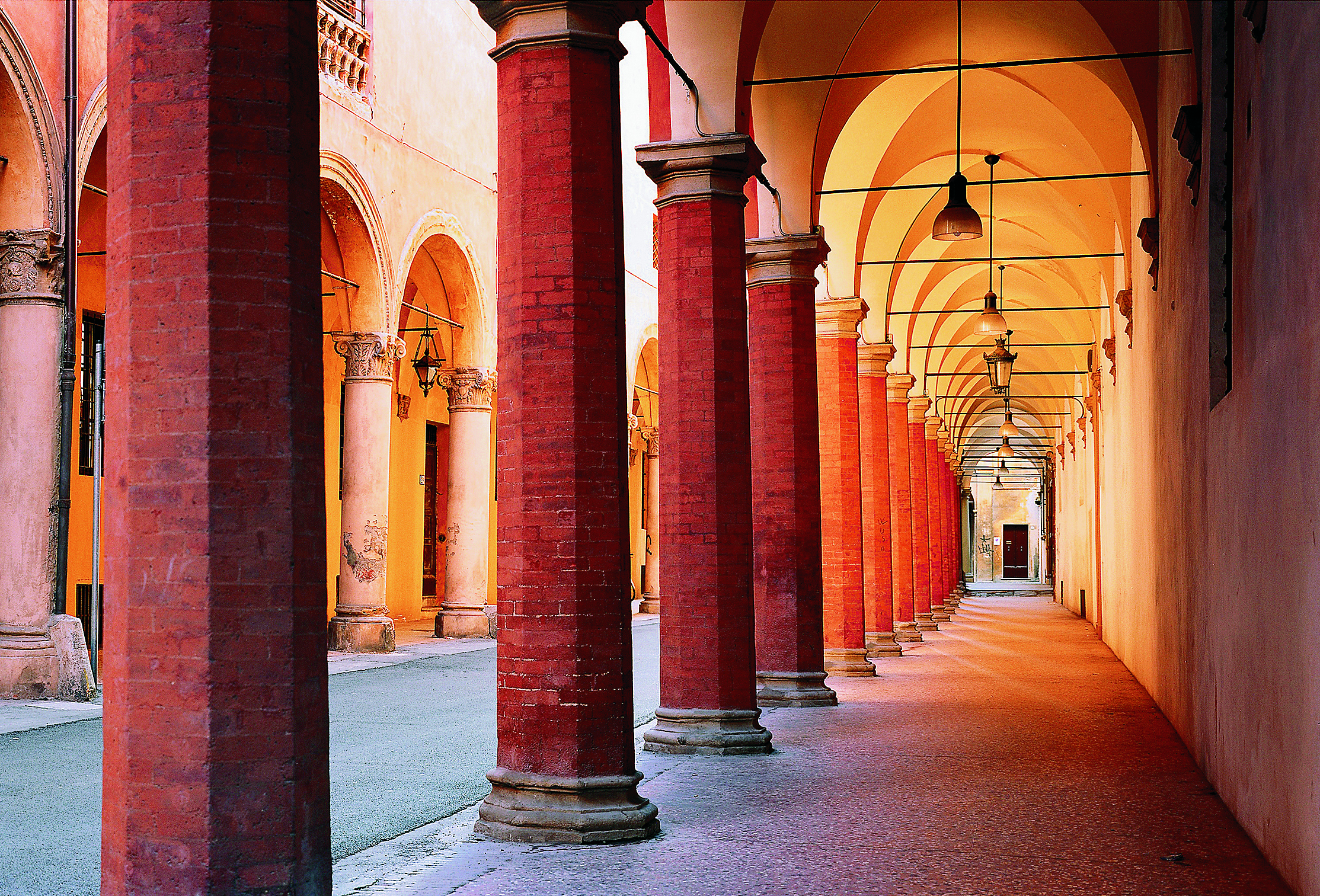
The first porticoes date back to the 11th century, originally
conceived to extend the surface area of private buildings in response to the
need for expansion of commercial and artisan activities. Over the following
centuries, the number of porticos increased exponentially, mainly due to the
strong increase in population caused both by the arrival of students and
professors at the University of Bologna and by the exodus from the countryside.
For over ten centuries now, the porticos have been regarded as a meeting point, a place for aggregation and socialising for both locals and visitors, and it is precisely this social aspect that distinguishes these covered spaces, which were and still are privately owned for public use while being considered the most identifying feature of the city.
A further
distinctive feature of the porticoes is their dynamism in time. It is probably
the only UNESCO World Heritage Site that includes many components that differ
one from the other both in looks and acrhitectural characteristics and for the
date of construction.
The portico element of the Barca neighbourhood building, in the suburbs of Bologna, was conceived and built in the 1960s, bringing into the modern age an architectural element from the Middle Age of the city. At the same time, it’s not something that stands still in time. Many porticoes are still buing built and will be built in the future, others will be modernized or reconstructed, enriching the variety of arcades in the city.
For all of these reasons, the designation of the
porticoes represents an innovative element, as the choice does not concern a
specific place, but an architectural complex that embraces the entire city,
from the centre to the metropolitan area for a total of 62 km. It is a
widespread heritage not only from an artistic point of view, but also from a
socio-cultural perspective, since the porticoes symbolize the very essence of
Bolognese hospitality.
Details of the designated sections are given below.
Santa Caterina and Saragozza
Via Santa Caterina, described according to a document
from the Middle Ages as a street inhabited by "hungry wolves, prostitutes,
gravediggers, shopkeepers and craftsmen", still amazes its wayfarers with
colourful low houses, a picture of Bologna kept unchanged from the past. The
somewhat gloomy, wooden portico occupies only one side of the street and still
houses two of the city's best Osterias.
Santo Stefano and Mercanzia
In this magical corner, one of the city's most
beautiful squares, with its cobblestones sloping down to the spectacular
Basilica of Santo Stefano (aka “Seven Churches”), the porticoes appear as a
real embrace, starting from the Palazzo della Mercanzia and continuing along
the entire perimeter of its irregular buildings. An embrace that also embodies
the liveliness of the activities carried out in their eternal shade: cafés, cocktail
bars, historic restaurants, promenades, students chatting or playing the
guitar. The most striking portico? Undoubtedly that of Palazzo Bolognini, with
its terracotta "heads" that seem to peer out at passers-by. And here
comes a recurring question that no one can ever answer: who are those heads
depicting?
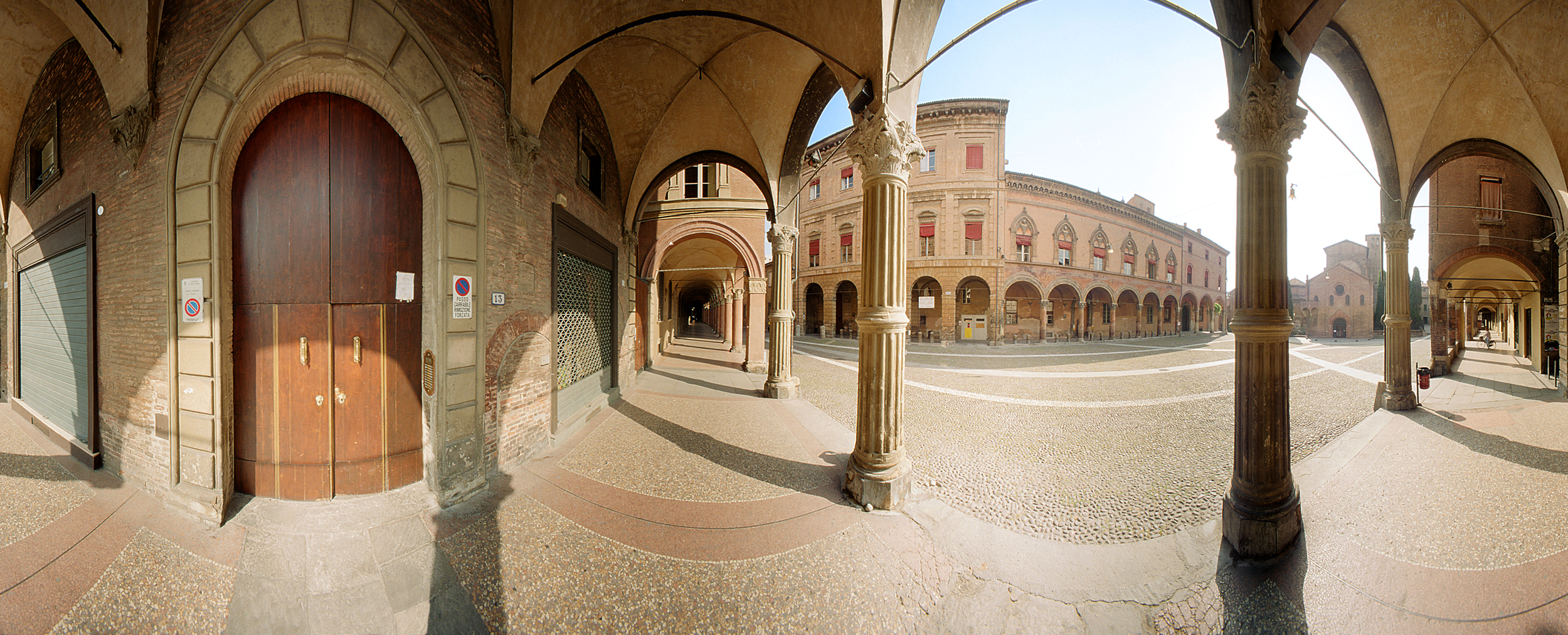
Baraccano
Located in the heart of the Baraccano Monumental
Complex, commissioned by Giovanni II Bentivoglio, the portico of the Baraccano
has entered the UNESCO list both for its symbolic value than and for its actual
beauty. The whole consists of an archway providing access to a complex that
started out as a shelter for pilgrims and wayfarers, and over time was
converted into a reception and educational centre for girls from less-favoured
social classes, in order to teach them a profession and ensure them a more
stable future. Today, the Bolognese meet "al Baraccano" for a walk to
the nearby Giardini Margherita, or to enter the historic centre for a shopping
trip at the many shops along Via Santo Stefano.
Galliera
When getting to Bologna by train, visitors will easily
find the directions they need to reach what is now considered Bologna's main
shopping street, Via Indipendenza, which connects the station to Piazza
Maggiore in a distance of just over 1 km. The relatively young Via
Indipendenza, built after demolishing houses and buildings in the 19th century,
ended up replacing what was once the main artery in the centre of Bologna, Via
Galliera: until the 19th century, this was Bologna's "noble" road, a
compulsory route for those coming from the flatlands, and the subject of
impressive construction works carried out by the city's richest families
between the 15th and 16th centuries, resulting in the erection of palaces and
imposing porticoes that would show off the wealth that flourished in the city
during those centuries of cultural, economic and artistic prosperity.
Pavaglione, Banchi and
Piazza Maggiore
The Pavaglione (from 'Papilio', the name of the silkworm sold right under the portico in Piazza Maggiore) is undoubtedly Bologna's most iconic portico. Located in the eastern part of the square under the Palazzo dei Banchi, it was built in the 15th century with the dual function of dividing the elegant Renaissance square from the intricate, chaotic and odorous maze of streets of the "Quadrilatero" (the ancient medieval market) and providing a suitable place for the city's bankers to conduct their business and set up money-changing desks in a city that had by then reached a decidedly cosmopolitan dimension, thanks to the presence of countless students from different European and international countries. The portico, a majestic example of a Bolognese arcade, stretches from Via Rizzoli to Via Farini and includes several sections belonging to different buildings: from Palazzo Ronzani (soon to be the site of the Cineteca di Bologna's new Modernissimo cinema) to the medieval Ospedale della Morte over the historic Archiginnasio complex with its Anatomical Theatre and the imposing Stabat Mater Hall.
San Luca
When talking about porticoes, we cannot but mention
the extremely long archway of San Luca, the longest in the world, connecting
the city centre with the Sanctuary of the Madonna di San Luca, located on top
of the Colle della Guardia, with a total length of about 4 km and almost 700
arches. The Basilica seems to watch over Bologna, connected to the city by this
"umbilical cord" that keeps it close and allows wayfarers to walk the
itinerary up and down in all weather conditions. Conceived as a devotional
pilgrimage route, the Portico of San Luca is today a great "outdoor
gym" attended every day at all times by children, groups of walkers, young
and elderly people, who tire themselves out on the ascent from the
"Cassero" of Porta Saragozza to the top of the hill, passing through
the challenging “Curve of the Orphans” alternating steep climbs with steps and
flatter stretches. A perfect route to work off that Sunday lunch of tortellini!
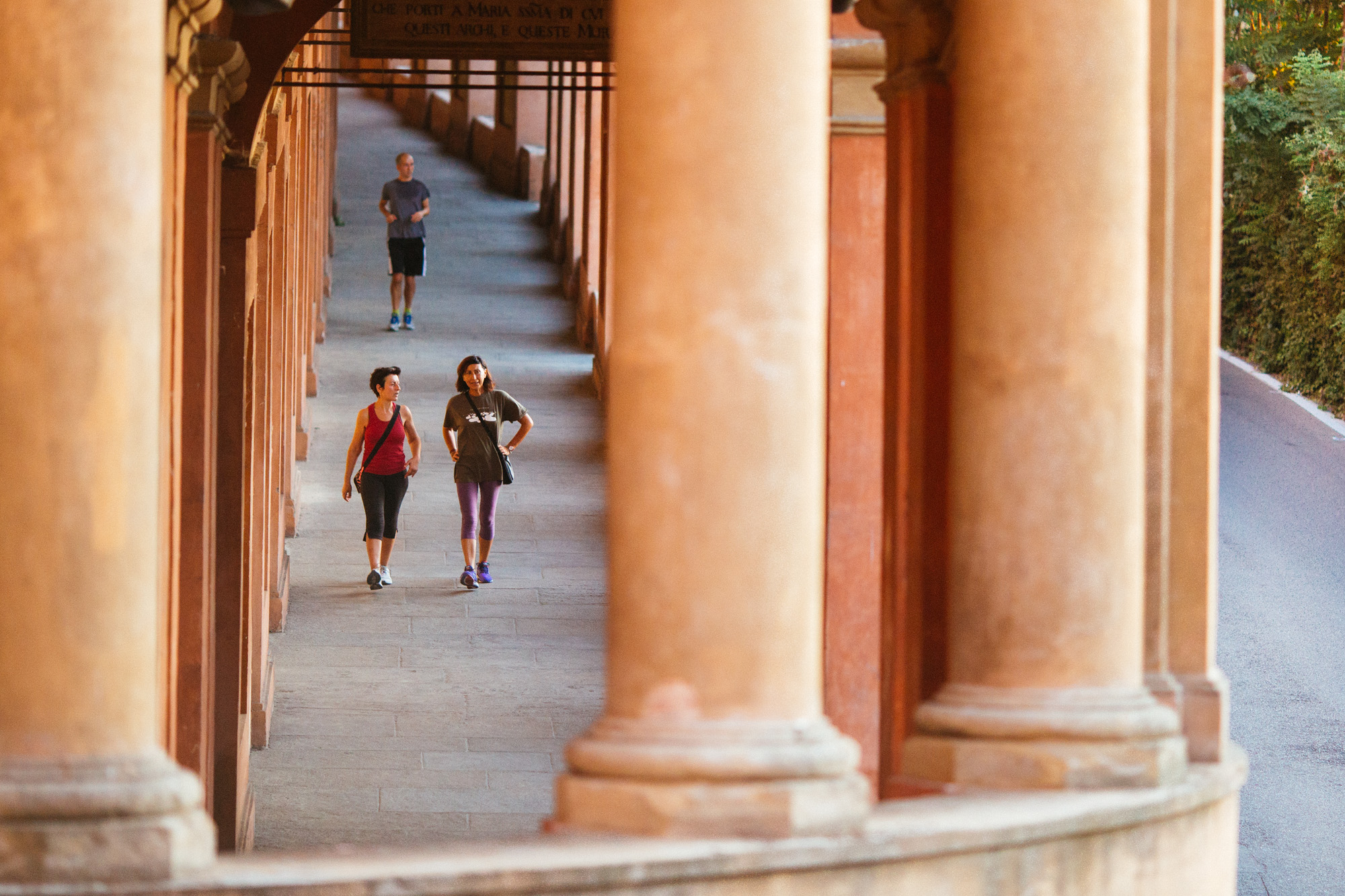
University and Academy
A street, via Zamboni, symbol of the oldest university
in the western world: many buildings of different styles and heterogeneous
porticoes alternate along this street formerly known as "San Donato",
which until the first centuries after the year 1000 was completely immersed in
the countryside and only flourished as an architectural area thanks to the
intervention of the Bentivoglio family - who decided to establish their centre
of power here through the erection of their palace. The family residence was
razed to the ground in a popular uprising at the beginning of the 16th century,
but its original site is now replaced by the majestic Teatro Comunale, with its
remarkable portico, the beating heart and nerve centre of a university area that
never sleeps.
Certosa
With its incredible sight of yellow-orange arches and
its perfectly linear architectural structure, it is one of the most photogenic
porticos in Bologna, while the dream of finding it cleared of walkers and
runners is shared by many camera enthusiasts. The Portico della Certosa
"hooks up" to that of San Luca, effectively flanking the Dall'Ara
Stadium and providing a protected route to the spectacular Certosa Monumental
Cemetery.
Cavour, Farini and
Minghetti
This is perhaps the most elegant and finely decorated portico in the city centre, not surprisingly in a street, Via Farini, which is now characterised by luxury boutiques. The portico in question is the work of the artist Gaetano Lodi, who decided to decorate each vault of the archway with different historical episodes in chronological order and in splendid colours. The square is also famous for being the birthplace of the beloved Bolognese singer and songwriter Lucio Dalla.
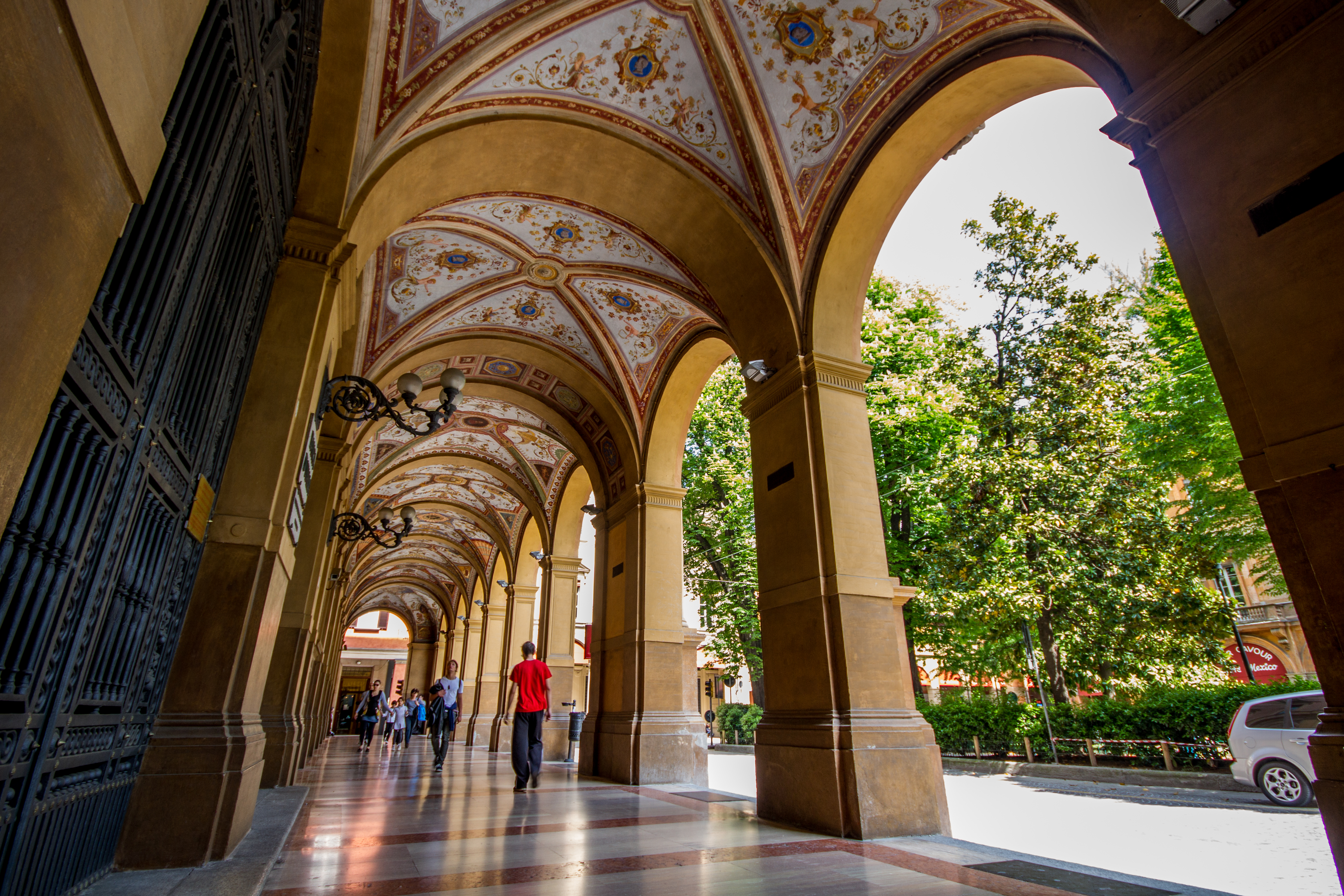
"Treno della
Barca”
The porticoed building in the suburban district of La
Barca, or "Il Treno" (The Train) as the locals affectionately call
it, is a two-storey building that reminds of the architecture of the city’s
historic buildings, thus embodying the soul of the whole city area, from the
oldtown to the outskirts. It was designed in the early 1960s by the Bolognese
architect Giuseppe Vaccaro and inaugurated in 1962 as a residence for workers,
many of whom had emigrated from southern Italy. Today the neighbourhood remains
popular and marked by a strong international character, merging local
inhabitants with foreigners who have joined our country in recent years. Once
again the portico becomes an element of hospitality, gathering and socialising.
MAMbo
The building, Bologna's former bread furnace, was built in 1917, commissioned by the city's first socialist mayor, Francesco Zanardi. Today, the portico is the gateway to the Art District and to the Museum of Modern Art, MAMbo. This portico is also a very popular place for social gathering thanks to the presence of the museum's café.
Strada Maggiore
Our journey ends on the Via Emilia, splitting Bologna in two and passing right under the Two Towers before taking the name “Strada Maggiore” in the stretch from the heart of the city towards the seaside. The road, with one of the oldest and most easily recognizable pavings, is an apotheosis of porticoes of rare beauty on both sides of the street, dominated by the majestic wooden portico of Palazzo Isolani, the first example of a medieval portico in the city. Under its impressive columns dozens of Bolognese and tourists alike narrow their eyes to spot the famous "three arrows" which, according to legend, are stuck in the top of the archway!